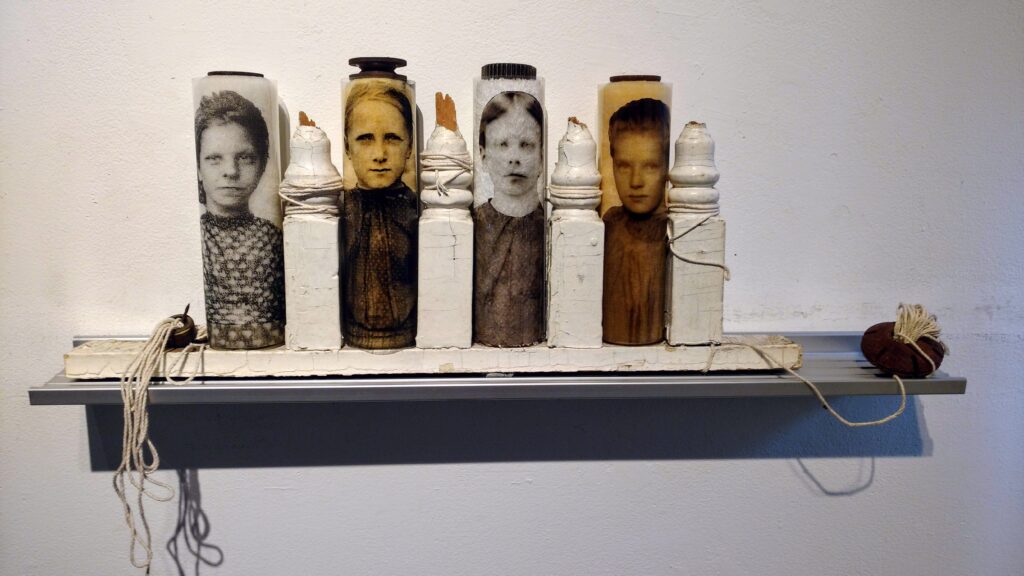Anne Lambert
Four Mill Girls
Inspiration can come from countless sources and takes many forms. Anne Lambert’s homages are a stroll through Old Master paintings, antique photographs, and a history of women’s labor. Lambert was inspired by art history and the world around her, taking pieces from the past and making them her own. The humor that winds its way through all of Lambert’s works are evident in her artistic homages. She borrowed from the Renaissance, providing her own interpretations of the female form. The impassive faces of women portrayed by Leonardo da Vinci, Rogier van der Weyden, and Jan van Eyck are highlighted, abstracted, given personality, and made contemporary in her hands. Her trio of meditations on Van Gogh’s descent into madness is captured through a use of his style and palette, while acknowledging an ever-present anxiety that many of us feel.
Lambert’s Pioneer Women are equally personal, and while her usage of nineteenth-century photographs conveys detached anonymity, some of the women represented are known to her, such as her grandmother Emily, a woman who worked and provided for her family at a young age. Other faces represent the pressures of nineteenth century domesticity and leaving home, as well as the relentless toil of work in the textile mill. Lambert’s studio was located in a renovated and repurposed mill, and one might think she channeled the women who walked the floors before her in works depicting young women with tired eyes but determined focus. As always, Lambert’s use of found objects—wire, a horseshoe, broken spindles from a staircase—provide further context into the story of past women’s lives.
Gift of Dan Buie, 2020.13

